Posté par Sébastien Bontemps, le 22 juin 2013;
- Date du colloque : 8-11 mai 2014
- Date limite : 15 septembre 2013
 International Congress on Medieval Studies, May 8 – 11, 2014 Deadline: Sep 15, 2013 International Congress on Medieval Studies, May 8 – 11, 2014 Deadline: Sep 15, 2013
Other Animals and Humans in Medieval Art Session to be held at the 2014 International Congress on Medieval Studies, Kalamazoo Michigan
Sponsored by the International Center of Medieval Art (ICMA)
Organizers: Corine Schleif (Arizona State University, Phoenix, AZ) Martha Easton (Seton Hall University, South Orange, NJ)
For some “animals are good to eat.” For others “animals are good to think with” (Levi-Strauss). Medieval art and society could not have existed without nonhuman animals. Human knowledge of animals is and was produced and exchanged largely through images (Berger) – albeit differently during the Middle Ages than today. Papers may address the ways in which humans defined . . . → En lire plus
Posté par Sébastien Bontemps, le 22 juin 2013;
- Date et lieu du colloque : 1-3 novembre 2013, University of Connecticut, Storrs
- Date limite : 1er septembre 2013
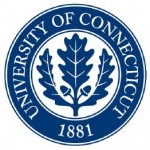 November 1-3, 2013 University of Connecticut, Storrs November 1-3, 2013 University of Connecticut, Storrs
We are at the point of an epistemological turn. How do we gain, analyze, and disseminate knowledge? How is knowledge curated and archived? How do Western notions of creativity, imagination, and production evolve and change in a global multi-media environment? These and other questions are at the forefront of humanistic endeavors in the digital age and at this symposium, with a focus on the work of Vilém Flusser (1920-1991). Flusser addressed these questions in his wide-ranging texts, engaging a variety of fields in this debate. It is the task of the humanities to engage other fields of inquiry as well as the public and industry, and, most importantly, contribute to the shaping . . . → En lire plus
Posté par Damien Bril, le 22 juin 2013;
Sabine Frommel et Juliette Dumas (éd.), Bâtir au féminin ? Traditions et stratégies en Europe et dans l’Empire ottoman. Paris, Picard, 2013.
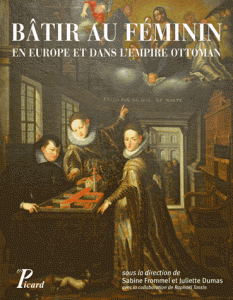 Bâtir au féminin sonne comme une provocation pour l’époque moderne, tant la place des femmes dans le domaine du patronage architectural peut sembler limitée entre le XVe et le XVIIIe siècle. Pourtant, si l’Europe chrétienne et l’Empire ottoman musulman se retrouvent dans une distribution sexuée des rôles – aux hommes revient l’implication dans la vie publique et politique, aux femmes l’action dans la sphère domestique –, de notables exceptions sont admises pour les femmes de l’élite, notamment quand elles appartiennent aux maisons régnantes. Les contributions regroupées dans ce volume se . . . → En lire plus Bâtir au féminin sonne comme une provocation pour l’époque moderne, tant la place des femmes dans le domaine du patronage architectural peut sembler limitée entre le XVe et le XVIIIe siècle. Pourtant, si l’Europe chrétienne et l’Empire ottoman musulman se retrouvent dans une distribution sexuée des rôles – aux hommes revient l’implication dans la vie publique et politique, aux femmes l’action dans la sphère domestique –, de notables exceptions sont admises pour les femmes de l’élite, notamment quand elles appartiennent aux maisons régnantes. Les contributions regroupées dans ce volume se . . . → En lire plus
Posté par Sébastien Bontemps, le 21 juin 2013;
- Date et lieu de la journée d'étude : 10 décembre 2013, University of Cambridge
- Date limite : 30 août 2013
 Cultural Exchange: Russia and the West II Cultural Exchange: Russia and the West II
University of Cambridge, 10th December 2013
Following the highly successful Cultural Exchange: Russia and the West conference, held at the University of Bristol in 2011, Theodora Clarke and Cinthia Willaman are pleased to announce a follow up postgraduate symposium at the University of Cambridge.
Cultural Exchange: Russia and the West II is an opportunity to re-examine the artistic links between the two regions both before and after the Revolution of 1917. Russian history is marked by key moments of contact and exchange which have shaped and transformed its cultural heritage. The conference will challenge the notion that Russia was isolated by geography and politics by considering the development of Russian art within . . . → En lire plus
Posté par Matthieu Lett, le 21 juin 2013;
- Date limite : 19 septembre 2013
- Date et lieu du colloque : 15-17 janvier 2014, Paris
 L’équipe de recherches sur l’Afrique (ArScAn, UMR 7041 du CNRS), l’Université Paris 1 Panthéon Sorbonne et le Département de la Recherche et de l’Enseignement au musée du quai Branly organisent à Paris un colloque international sur l’art rupestre d’Afrique. L’équipe de recherches sur l’Afrique (ArScAn, UMR 7041 du CNRS), l’Université Paris 1 Panthéon Sorbonne et le Département de la Recherche et de l’Enseignement au musée du quai Branly organisent à Paris un colloque international sur l’art rupestre d’Afrique.
L’art rupestre, qu’il s’exprime sous la forme de peintures, gravures ou sculptures sur parois rocheuses, est présent sur presque la totalité du continent africain. La diversité des formes, des techniques, des âges et sans doute des finalités, font de l’étude de l’art rupestre un vaste champ de recherches.
L’organisation d’un colloque international à Paris sur ces manifestations artistiques a pour but de réunir de nombreux chercheurs qui exposeront l’actualité de leurs travaux et confronteront leurs opinions. . . . → En lire plus
Posté par Pascale Dubus, le 20 juin 2013;
- Date limite : 6 septembre 2013
- Date et lieu du colloque : 21–22 mars 2014, Londres, Royal Museums Greenwich
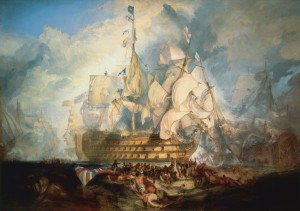 To coincide with a major exhibition of the work of JMW Turner (1775-1851), Royal Museums Greenwich will host an innovative, interdisciplinary conference exploring the cultural impact of the sea in the 19th century. The exhibition will be the first full-scale examination of Turner’s lifelong preoccupation with the sea, and features many of the artist’s most celebrated works, from his transformative Academy paintings of the late 1790s and early 1800s to the unfinished, experimental seascapes he produced towards the end of his life. To coincide with a major exhibition of the work of JMW Turner (1775-1851), Royal Museums Greenwich will host an innovative, interdisciplinary conference exploring the cultural impact of the sea in the 19th century. The exhibition will be the first full-scale examination of Turner’s lifelong preoccupation with the sea, and features many of the artist’s most celebrated works, from his transformative Academy paintings of the late 1790s and early 1800s to the unfinished, experimental seascapes he produced towards the end of his life.
Paintings on display will include Fishermen at Sea (Tate),The Wreck of a Transport Ship . . . → En lire plus
Posté par Zinaïda Polimenova, le 20 juin 2013;
- Date et lieu des rencontres : 27-28 juin, Paris, Institut d'art et d'archéologie
 Programme Programme
JEUDI 27 JUIN 2013
9h30 / Accueil 9h45 / Ouverture, par Philippe Dagen, directeur du Labex CAP
10h00 / Mondialisation, table ronde modérée par Agnès Callu, Musée des Arts décoratifs
Claudine Voisenat (IIAC), Bérose, animation d’un réseau scientifique autour de l’histoire des savoirs ethnographiques et du patrimoine Philippe Dagen (HiCSA), Daniel Fabre (IIAC), Anne-ChristineTaylor (MQB), L’Autre de l’art, Catherine Grenier (Centre Pompidou), Histoire de l’art et mondialisation
11h00 / Histoires de regards: archives, mémoire, création, table ronde modérée par François Queyrel, HISTARA
Elisabeth Parinet (ENC), Outils pour une mémoire Frédéric Barbier (IHMC/ENS Ulm) et François Queyrel (HISTARA), Transmission des modèles, mobilité des artistes . . . → En lire plus
Posté par Matthieu Lett, le 18 juin 2013;
- Date et lieu du colloque : 14-15 novembre 2013, ETH Zürich, Science City Campus
- Date limite : 28 juillet 2013
 Universal – Specific. From analysis to intervention? Universal – Specific. From analysis to intervention?
« No one sees the Earth globally. » Or: « A crowded place of risk and unwanted consequences. » (B. Latour, 2011)
The universal – specific opposition has been central to epistemological debates and methodological shifts within the history of most (if not all) scientific disciplines. An equivalent dualism confronts artists and architects addressing a wide audience and/or planning and realizing transformative or critical interventions that involve both local factors and a range of far-reaching political, social or economic constellations and processes. This conference, in continuing our efforts to promote dialogue between the history of art and the . . . → En lire plus
Posté par Leonard Pouy, le 18 juin 2013;
- Date limite : 31 juillet 2013
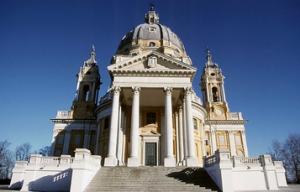 « Fondazione 1563 per l’art e la cultura » in the framework of the « Study Program on the Age and the Culture of Baroque » launches a call for applications for five fellowships for university graduates under 38 years of age, on the theme : CULTURE, ART AND SOCIETY IN THE TIMES OF JUVARRA « Fondazione 1563 per l’art e la cultura » in the framework of the « Study Program on the Age and the Culture of Baroque » launches a call for applications for five fellowships for university graduates under 38 years of age, on the theme : CULTURE, ART AND SOCIETY IN THE TIMES OF JUVARRA
The application deadline is 31 July 2013.
Applications forms available at www.fondazione1563.it
To be sent to info@fondazione1563.it
http://f.hypotheses.org/wp-content/blogs.dir/361/files/2013/05/locandina-bando-barocco.pdf
Posté par Leonard Pouy, le 18 juin 2013;
- Date et lieu : 27-29 mars 2014, Rome
- Date limite : 30 septembre 2013
 Society and Culture in the Baroque Period, Rome, 27-29 mars 2014 Society and Culture in the Baroque Period, Rome, 27-29 mars 2014
In March 2014, Rome will host the final conference of ENBaCH (European Network for Baroque Cultural Heritage), a project which kicked off in June 2009 and will end in May 2014.
The aim of this conference will be not only to discuss the research results produced by the eight project partners, but also to serve as an opportunity for a multidisciplinary meeting of groups and individual researchers studying the Baroque Period from every possible perspective: from politics to literature, from society to art and from music to science.
The key word envisioned in our approach is . . . → En lire plus
Posté par Pascale Dubus, le 17 juin 2013;
- Date limite : 1er décembre 2013
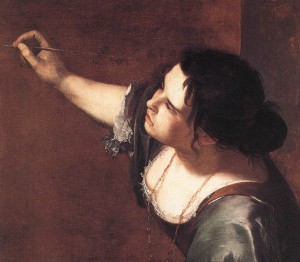 The Italian schools occupied central positions in early modern art collections, a tradition that continued through the 19th and 20th centuries. The primacy of Italian art became a cornerstone for museum practice as well as a founding principle for the nascent art history discipline. This issue takes a closer look at the beginning of this tradition in the 17th and 18th century. Since the 1960s (and before), scholars have taken an interest in the Grand Tours of princes, aristocrats and connoisseurs. More recent research has added to the picture by discussing the collecting activities of artists, architects, diplomats, dealers and scholars, . . . → En lire plus The Italian schools occupied central positions in early modern art collections, a tradition that continued through the 19th and 20th centuries. The primacy of Italian art became a cornerstone for museum practice as well as a founding principle for the nascent art history discipline. This issue takes a closer look at the beginning of this tradition in the 17th and 18th century. Since the 1960s (and before), scholars have taken an interest in the Grand Tours of princes, aristocrats and connoisseurs. More recent research has added to the picture by discussing the collecting activities of artists, architects, diplomats, dealers and scholars, . . . → En lire plus
Posté par Myriam Arcangeli, le 17 juin 2013;
- Date limite : 10 juillet 2013
- Date et lieu du colloque : Janvier 2014, Canada, Québec
 La Society for American Archaeology ou SHA est la plus grande association au monde d’archéologues spécialisés dans la période moderne. En Janvier 2014, elle se réunira dans la ville de Québec pour son congrès annuel. À cette occasion, un grand nombre de communications porteront sur l’archéologie de l’époque moderne dans le domaine français. La Society for American Archaeology ou SHA est la plus grande association au monde d’archéologues spécialisés dans la période moderne. En Janvier 2014, elle se réunira dans la ville de Québec pour son congrès annuel. À cette occasion, un grand nombre de communications porteront sur l’archéologie de l’époque moderne dans le domaine français.
Ceci est un appel à communications pour une session dédiée aux céramiques qui ont été produites ou retrouvées sur ce genre de sites. Si vous souhaitez y participer, n’hésitez pas à prendre contact avec nous sous les plus brefs délais. Le site du congrès se trouve à l’adresse suivante : http://www.sha2014.com/callforpapers.html
Titre de la session : L’étude des céramiques de l’époque moderne à partir des . . . → En lire plus
Posté par Pascale Dubus, le 16 juin 2013;
- Date limite : 21 novembre 2013
- Date et lieu du colloque : 6-8 février 2014, Etats-Unis, Scottsdale (Arizona)
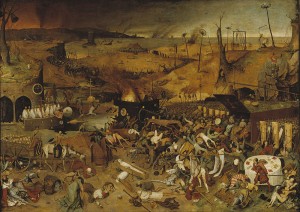 The Arizona Center for Medieval & Renaissance Studies (ACMRS) invites session and paper proposals for its annual interdisciplinary conference to be held February 6–8, 2014 in Scottsdale, Arizona. We welcome papers that explore any topic related to the study and teaching of the Middle Ages and Renaissance, and especially those that focus on this year’s theme of catastrophes and the apocalyptic. The Arizona Center for Medieval & Renaissance Studies (ACMRS) invites session and paper proposals for its annual interdisciplinary conference to be held February 6–8, 2014 in Scottsdale, Arizona. We welcome papers that explore any topic related to the study and teaching of the Middle Ages and Renaissance, and especially those that focus on this year’s theme of catastrophes and the apocalyptic.
Selected papers related to the conference theme will be considered for publication in the conference volume of Arizona Studies in the Middle Ages and the Renaissance, a series published by Brepols Publishers (Belgium).
The keynote speaker is Professor Jaime Lara, Research Professor, ACMRS and . . . → En lire plus
Posté par Katherine Baker, le 15 juin 2013;
- Date limite : 16 août, 2013, 16 août, 2013
 The CAA International Travel Grant Program, generously supported by the Getty Foundation, provides funding to twenty art historians, museum curators, and artists who teach art history to attend the 102nd Annual Conference, taking place February 12–15, 2014, in Chicago. The grant covers travel expenses, hotel accommodations, per diems, conference registrations, and one-year CAA memberships. For 2014, CAA will offer a one-day preconference meeting on February 11 for grant recipients to present and discuss their common professional interests and issues. The CAA International Travel Grant Program, generously supported by the Getty Foundation, provides funding to twenty art historians, museum curators, and artists who teach art history to attend the 102nd Annual Conference, taking place February 12–15, 2014, in Chicago. The grant covers travel expenses, hotel accommodations, per diems, conference registrations, and one-year CAA memberships. For 2014, CAA will offer a one-day preconference meeting on February 11 for grant recipients to present and discuss their common professional interests and issues.
The goal of the program is to increase international participation in CAA and to diversify the organization’s membership, which now includes members from seventy-five nations. CAA also strives to familiarize international participants with the submission process for conference sessions and to . . . → En lire plus
Posté par Pascale Dubus, le 14 juin 2013;
- Date limite : 30 novembre 2013
- Date de parution : Octobre 2014
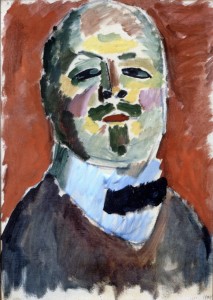 RIHA Journal (http://www.riha-journal.org) invites submissions for its Special Issue: RIHA Journal (http://www.riha-journal.org) invites submissions for its Special Issue:
Beyond boundaries. Artists and art critics from Central and Eastern Europe in the West.
The aim of the Special Issue is to present artists and art critics from Central and Eastern Europe who gained a special position in the Western Art World and played an important role in the development of art and art criticism. Many of them, well-known in the West (i.e., France, Germany, Great Britain), stayed almost unknown in their homelands although their output was imposing. The Special Issue is not confined to one particular period or one . . . → En lire plus
Posté par Artistes et Télévision, le 14 juin 2013;
- Date et lieu de la journée d'étude : 28-29 Juin, Paris, Institut National d'Histoire de l'Art.
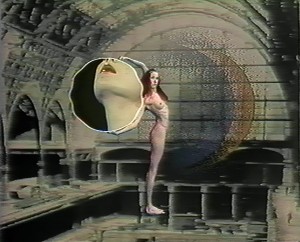
L’art vidéo puise son origine directement de la télévision. Un des premiers artistes à travailler avec la technologie vidéo, Nam June Paik, disait que celle-ci était la fille de la télévision. Les artistes s’en sont d’abord pris au téléviseur lui-même avant de voir en la vidéo un nouveau medium à expérimenter. Les liens qu’entretiennent les artistes avec la télévision n’ont cessé de se développer depuis les années 1960.
Les chaînes de télévision ont ouvert très tôt leurs studios aux artistes en voyant en eux une nouvelle force créatrice pour leur programmation. Ces artistes bénéficiaient alors de la régie de la chaîne, disposant de moyens techniques qu’ils ne . . . → En lire plus
Posté par Matthieu Lett, le 13 juin 2013;
- Date limite : 14 septembre 2013
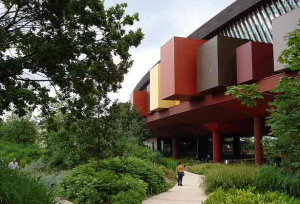 Le musée du quai Branly propose un programme de bourses d’étude pour la documentation de ses collections. Ces bourses visent à financer des enquêtes de terrain et /ou des travaux de documentation sur les collections de l’établissement, dédiées aux arts d’Afrique, d’Asie, d’Océanie et des Amériques. Le musée du quai Branly propose un programme de bourses d’étude pour la documentation de ses collections. Ces bourses visent à financer des enquêtes de terrain et /ou des travaux de documentation sur les collections de l’établissement, dédiées aux arts d’Afrique, d’Asie, d’Océanie et des Amériques.
Cinq bourses sont offertes pour l’année 2013-2014. L’une d’entre elles, la bourse du Cercle Lévi-Strauss’, est financée par le Cercle Lévi-Strauss de la Société des Amis ; les quatre autres sont proposées respectivement par le département de l’enseignement et de la recherche et par le département du patrimoine et des collections. Le montant maximal de chacune . . . → En lire plus
Posté par Pascale Dubus, le 12 juin 2013;
- Date limite : 15 juillet 2013
- Date et lieu du colloque : 19-21 juin 2014, Paris, Centre André Chastel, INHA
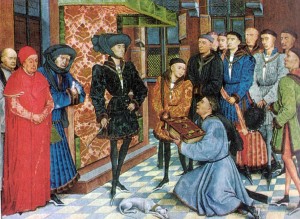
Ce colloque vise à interroger la place de l’artiste / artisan à la fin du Moyen Âge et au début de l’époque moderne dans divers contextes sociaux, en particulier à la ville et / ou à la cour, au sein des corporations et / ou dans l’hôtel du prince. Un certain nombre d’artistes ont répondu à des commandes dans ces deux sphères habituellement jugées distinctes, tels Jean Fouquet, Rogier van der Weyden, Albrecht Dürer, Hans Plock, Jacques Jordaens . . . → En lire plus
Posté par Cécile Coulangeon, le 12 juin 2013;
- Date limite : 8 juillet 2013
- Date et lieu de la conférence : Deuxième jeudi de chaque mois (octobre à avril), 18h30, Paris, Institut catholique.
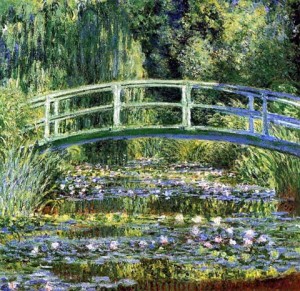 Pour la troisième année consécutive, les Jeudis de l’art, cycle de conférences en histoire de l’art ouvert à tous, se dérouleront à l’Institut Catholique de Paris sur toute la durée de l’année universitaire 2013-2014 (entre octobre et avril). Dans le cadre des cursus de licence et de master de la Faculté des Lettres, ces rencontres régulières veulent apporter un complément aux enseignements généraux en abordant des sujets plus spécifiques, et créer un lieu d’échanges interdisciplinaires entre étudiants, enseignants et public extérieur. C’est aussi l’occasion pour les chercheurs de donner un aperçu de leurs travaux tout en initiant les étudiants à la recherche scientifique. Pour la troisième année consécutive, les Jeudis de l’art, cycle de conférences en histoire de l’art ouvert à tous, se dérouleront à l’Institut Catholique de Paris sur toute la durée de l’année universitaire 2013-2014 (entre octobre et avril). Dans le cadre des cursus de licence et de master de la Faculté des Lettres, ces rencontres régulières veulent apporter un complément aux enseignements généraux en abordant des sujets plus spécifiques, et créer un lieu d’échanges interdisciplinaires entre étudiants, enseignants et public extérieur. C’est aussi l’occasion pour les chercheurs de donner un aperçu de leurs travaux tout en initiant les étudiants à la recherche scientifique.
Pour . . . → En lire plus
Posté par Sébastien Bontemps, le 12 juin 2013;
- Date limite : 15 septembre 2013
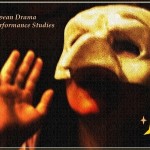 Appel à contribution pour le 3e numéro de la revue European Drama and Performance Studies (Classiques Garnier, 2014) « Le document iconographique dans son contexte : le hors-champ des images du spectacle »
L’histoire des arts du spectacle s’appuie sur des images (représentations d’acteurs, de scènes…) et plus largement sur des documents pouvant faire place à l’image (affiches, programmes, éditions illustrées de textes dramatiques, articles de presse avec illustrations ou photographies, caricatures, pochettes de « disques de théâtre », etc.). Ces images ont été étudiées en tant qu’elles pouvaient renseigner sur la représentation disparue et la fabrique des spectacles. Certaines d’entre elles sont même devenues quasiment mythiques à force d’être reproduites, de la miniature du martyre de sainte . . . → En lire plus
|
Équipe Rédacteur en chef : Olivier Bonfait.
Rédacteurs : Elliot Adam (Moyen Age) ; Nicolas Ballet (XX-XXIe siècles) ; Matthieu Fantoni (musées) ; Antonella Fenech Kroke (bourses) ; Vladimir Nestorov (Lettre mensuelle)
Administrateur web : Matthieu Lett.
ancien éditeur : Pascale Dubus
anciens rédacteurs : Gautier Anceau, Sébastien Bontemps, Damien Bril ; Sébastien Chauffour ; Ludovic Jouvet ; Aude Prigot
|
 International Congress on Medieval Studies, May 8 – 11, 2014 Deadline: Sep 15, 2013
International Congress on Medieval Studies, May 8 – 11, 2014 Deadline: Sep 15, 2013


















